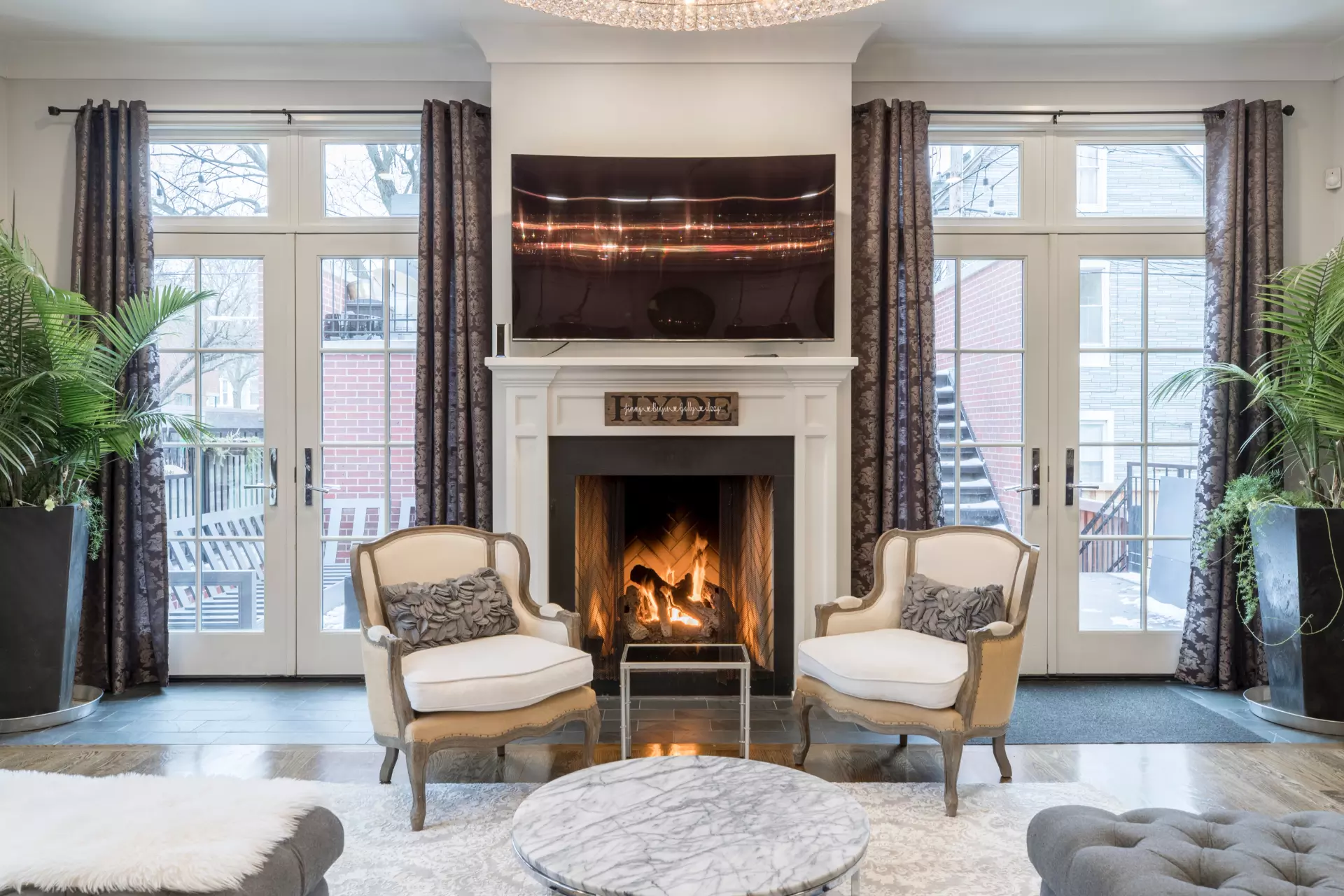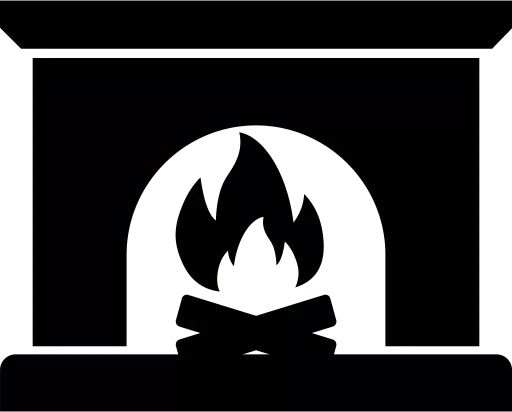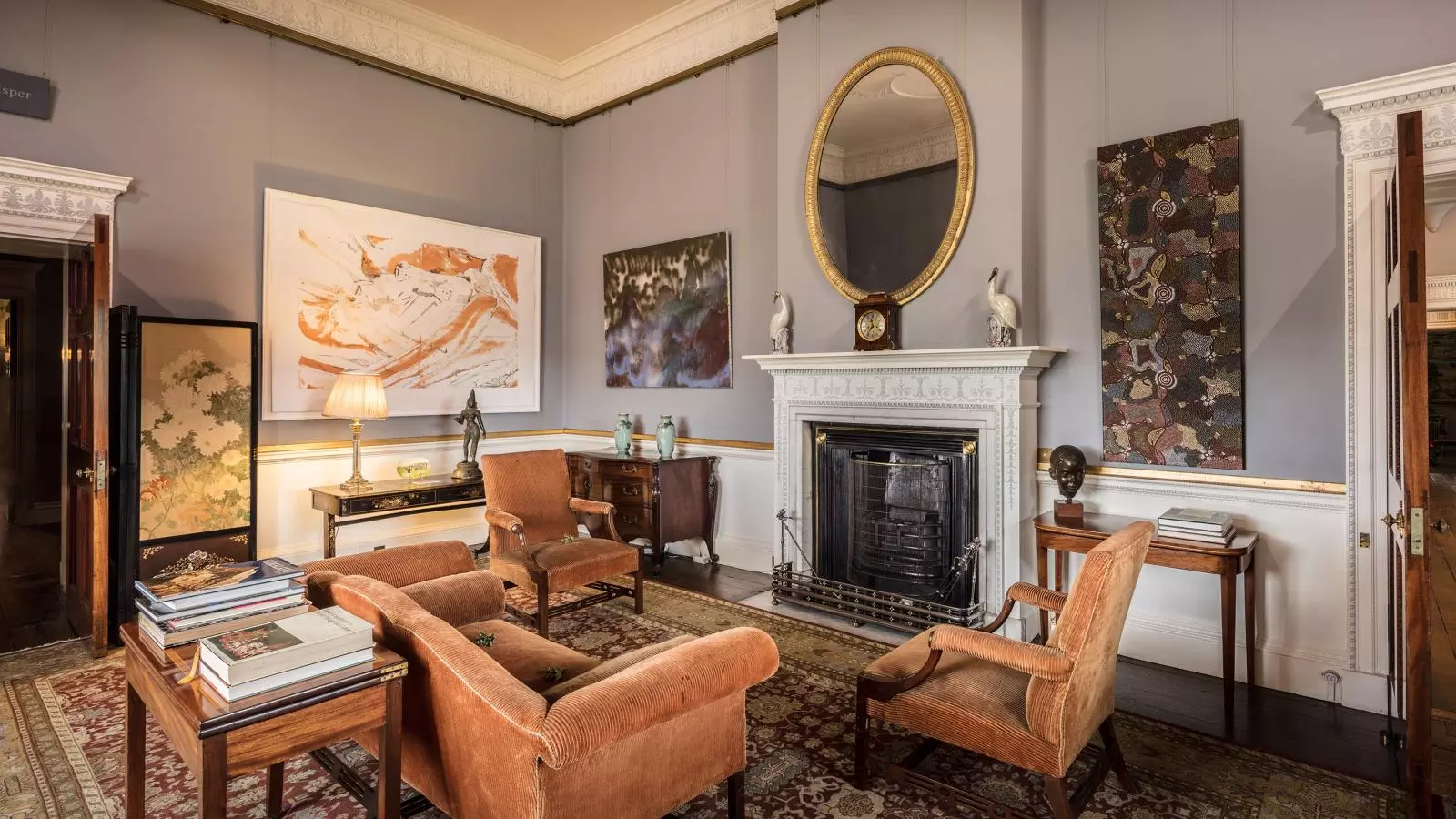Traditional fireplaces create a comforting and cosy atmosphere for all living rooms and households. Beautiful fireplaces alight with burning logs or coal are perfect for cosying around on cold winter evenings and nights and make excellent centrepieces for homes.
These traditional fireplaces look stunning in period homes. Period homes are renowned for looking and being cold and challenging to heat due to their spaciousness. However, a grand traditional fireplace can often thoroughly heat a room or house and distribute quite a good amount of heat and warmth.
Traditional elements of an old classic fireplace consist of often neutral and understated colours and designs; typically, they have painted wood mantels, and natural stone surrounds.

The accessories that surround the fireplace often decide its overall style and traditional genres. Polished white marble and glossy whites painted onto the mantelpiece give off a very modern aesthetic; glass enclosures often do the same.
The trend is to create a very minimalistic appearance for the household for a very seamless and slick look. However, you may desire a more maximalist appearance, with embezzled mantelpieces that are fussy with designs and fancy framing. These fireplaces will offer a more period home theme and perhaps grander than a more modern choice.
Numerous fireplace and furnishing companies can bring you a wide range of any modern or traditional fireplace with glorious patterns and styles to adhere to all aesthetics and living room themes.
How does a traditional fireplace work?
Lighting a traditional fire anywhere in your home or living room presents two apparent challenges that you will likely have already thought of. Firstly, you need to avoid setting your house ablaze.
Second, you need to ensure that the smoke does not spill into the room. The fireplace solves all of these difficulties, and such is because it's made from groups of materials that don't burn, for example, metal, tile, and more traditionally, bricks and stones.
The fireplace takes care of the smoke by sending it up the chimney to never spread through the home and causes harm.
An essential mechanical function of a fireplace is generating a draft. Picture a hot air balloon; the mass of heated air rises, and the same goes for the fireplace; the column of heated gas rises up the chimney.
As the hot air rises, it pulls the smoke from the fire upwards. It results in a draft; a steady flow of hot gases and smoke goes up the chimney inside the wall.
The draft can also serve another purpose; any fire still needs a steady flow of oxygen to sustain it and keep it burning. The rising hot gas pulls fresh air into the burning fuel.
.jpg)
There are three methods by which heat moves:
Conduction
Conduction is when a hot object touches a cooler one and thus heats the colder object. Similarly to the way stoves heat pots of water and food.
Convection
Convection is a movable substance, like liquid or hot air, that circulates into a colder area and heats it.
Radiation
Radiation is warm electromagnetic waves, for example, heat lamps or rays from the sunlight. They carry heat to cooler objects and areas, warming them as their molecules move much faster.
Traditional fireplaces heat through means of radiation. The flame and hot coal send out harsh rays that strike people or objects in the room, warming them up by speeding up their molecules.
However, the principle of convection is also at work when it comes to fireplaces, which is why they can often be perceived as inefficient. A significant portion of the heat that the fire creates comes in the form of hot gas.
Convection sends the gas up the chimney, where it is eventually wasted. In addition, the draft draws more warm air from the living room than the fire burns, dragging it up the chimney too.
Doing so leaves the room much colder than before. Experts in furnishing say traditional fireplaces draw four to ten times as much hot air from the room than what is needed to curate the fire.
We can often lose more heat through convection than through radiation, which results in the fireplaces inefficiency. Also, the colder it is outdoor, the colder air the fireplace can suck in, which lowers overall efficiency.
Traditional vs Modern Fireplaces
Traditional Fireplaces | Modern Fireplaces |
|---|---|
| Traditional fireplaces must be manually controlled, meaning the user must insert wood physically, individually, light the match, and replenish the fire with more wood. | Modern fires are conveniently controlled, often using a remote control unit or perhaps through switches used to turn it off and on. These remotes and controllers regulate many factors other than solely heating parameters, such as brightness, fire intensity, and many more. |
| Traditional fireplaces require a mass accumulation of wood, which calls for an extra cost and space for storage. | Modern fireplaces drive their power from electricity and gas; however, traditional fireplaces get power from wood and lit matches. |
| Although wood can be sustainably sourced, the burning process emits carbon dioxide which is harmful for the environment. | Modern fireplaces emit no carbon dioxide and monoxide, which is environmentally friendly. |
| Traditional furnishings such as fireplaces tend to be quite a space in-efficient household items as they can be large and grand. They have a large capacity to accommodate wood. The more wood and logs you require, the more storage space you may need for safekeeping. You cannot customise it to suit the unique use of the owner in the way that a modern fireplace can. | Modern fireplaces can be customised in brightness, colour, style and fire intensity. Moreover, they are incredibly compact because they require no other storage space as they are powered predominantly by electricity or gas. On the whole, these kinds are far safer for your home, more spacious and eco-friendly than traditional counterparts. |
Restoring a Traditional Cast Iron Fireplace
Suppose you have moved into a new home and discover a beautiful period fireplace perched as the centrepiece of your living room. However, with it being pre-used, it may be in worse condition than what you may desire for the look of your home.
Replacing cast iron fireplaces can be a challenging job for any furnishing professional. However, here is some advice, ideas and tips to help you, should you wish to restore your fireplace to its original state:
If your fireplace is pre-painted, you may use a paint stripper, should the stripper not be made of lead-based as it could release harsh toxic fumes. You can scrape the paint off using a stiff brush, wire wool or a plastic scraper once you have used the paint stripper. But, again, be mindful not to scratch the surface.
Whether or not you have chosen to remove the paint, ensure you clean the surfaces with some kind of white spirit available to you. Please treat it with a rust remover afterwards. Use a polish in a black grate to finish it off and to protect the surface.

It is vital to remember that cast iron will begin to eventually rust due to the mass exposure to moisture in the air or from any liquids, don't be quickly tempted to clean any debris away with water; try to use a duster instead.
Creating a New Period Style Fireplace
If you desire the appearance of a period fireplace, you can find numerous at antique specialist stores, and if you're lucky enough, you may even find one to salvage at an auction.
However, such a hobby or search can be rather expensive and timely. To start creating, first, pick a cast iron fireplace insert that replicates numerous Victorian designs with detailed arches to gain a stunning antique look.
Then, there are a few options to consider to decipher which may best suit your needs and requirements, including:
- Cast iron gas fire and electric fire inserts ensure stunning open fires for the home, which many think of when picturing the ideal traditional centrepiece.
- Another design option is fireplace tiles, and these tiles were all the rage in the Victorian period. They brighten up and personalise your fireplace to give it a unique appearance that many will have been desperately searching for during this era.
- Next, it's time to choose a surround, and if you want the full period aesthetic in your living room or household, a cast iron fire surround is the best way to go. It makes an excellently bold statement and completes the look perfectly. You may also wish to consider a cast iron combination fireplace. These combination fireplaces are compact and small, coming together in one single complete unit.
- You need not purchase the surround and insert separately should you buy a combo. The combo style was most popular in Victorian bedrooms and during the 18th century, as they are most suited to smaller rooms. Combination cast irons are cost-effective, easy to place and create a beautiful and authentic appearance for your home.
Elements of a Traditional Fireplace

Cast Iron Fireplace Insert
Stunning cast iron fireplace inserts come complete with gas and electric fire fuel options to suit any household requirement. In addition, they offer an excellent traditional, period aesthetic adorned in Victorian features.

Tiled Fireplace Insert
Fireplace tiles add uniqueness and a stylish period touch to your traditional fireplace and brighten up the overall appearance. For further authenticity, you can insert fireside tools to your hearth to adhere more to the period.

Cast Iron Fire Surround
You may decide on an elegant cast iron fire surround to provide a bold statement, or you can opt for a different material for that same period fireplace look. For example, you may choose Agean Limestone fire surrounds, which are equally stunning and provide an excellent juxtaposition of black and white shades.

Cast Iron Combination Fireplace
Popularised in the 18th century and the perfect size for small rooms and bedrooms, the combination fireplace ensure you don't need to splash on additional inserts and surround to achieve that glorious period theme. It is available as a gas fire, electric fire or a solid fuel burning fire and features an exceptionally authentic victorian look to be enjoyed by all parties.
Contact us today for further information, advice, tips and websites to visit to purchase the fireplace or compartments that you need to restore your existing furniture or transform your home.
Do you own a traditional fireplace in Hastings or East Sussex? If you have a fireplace which requires a refurbishment or replacement contact our antique fireplace experts today.
